
Eat the Rainbow
You probably know by now that I'm constantly on the lookout for ways to "help" my kids eat more veggies. Part of the problem is, I get it. It took me forever (until, like, last year) to discover a true love for vegetables. Thankfully, the ways I enjoy them now often work for them, too - because they truly are delicious and easy to like.
A very basic way is to eat fresh-cut raw veggies. Most kids will eat raw carrots. Add a yummy dip, and they may eat other veggies on the tray as well. I came up with this kid-friendly lemony hummus for just that purpose. The extra lemony flavor compliments vegetables beautifully.
Kids & Veggies
Here are some tips to help kids eat more raw veggies:
-
Hangry: Get them when they're hungry! I find that eating more raw veggies tends to happen more often when I put a tray of crudite out on the table during dinner prep. I'm not too concerned about them spoiling their appetite with vegetables! I don't even have to say anything; I find they gravitate there as they come into the kitchen area to talk, walk by, or ask when dinner's ready. They usually eat more vegetables before dinner than during.
-
Mum's the word: This has been a tough one for me, but I do find that the less I say about those beautiful vegetables, the more they'll get eaten. Go figure, seems backwards to me - oh yeah, now I remember being a kid. Makes sense.
-
Small for the Littles: Keep the pieces cut thinly so they aren't too intimidating for kids. They may be willing to try a little florette of broccoli, but will turn away if there are only big pieces. A full carrot can be fun to eat, but usually it seems they prefer small bites.
-
Variety is the Spice of Life: Change it up to keep it fun and interesting. Farmers markets are full of veggies that seem exotic when compared to typical grocery veg. It doesn't have to be just carrots and celery. However, try to always include at least one veggie you know they like.
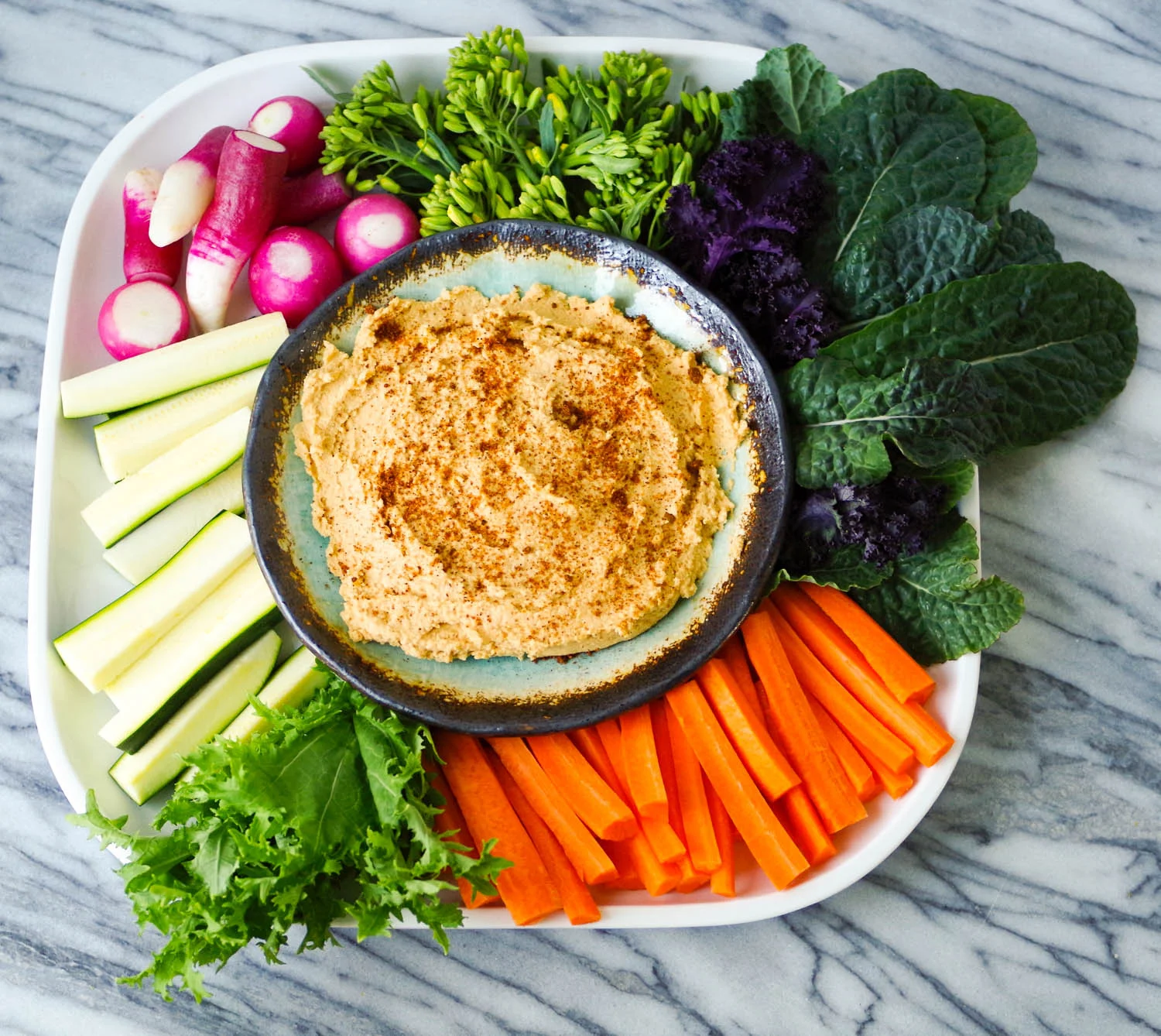
Lemony Hummus Sandwich
This hummus makes a great sandwich, too. Pictured below: lemony hummus, kale, and mustard greens with dijon mustard on whole wheat. Simple and delicious. The dijon adds the perfect bite of flavor, in my opinion.
Adding Oil and Salt
As a graduate of the Forks Over Knives Rouxbe culinary program, I have learned to omit oil and salt from dishes while maintaining flavor. That said, on occasion I (and/or those I'm with) enjoy involving oil and salt in a dish. My new way of doing this is to add them to the dish at the end. That way, the oil and salt isn't lost in the making of the dish; their flavors are in the forefront, as desired, while usually using far less than if they had been included in the preparation. If you'd like to add olive oil to this lemony hummus, I say go for it, and I highly recommend adding just enough of it right before eating. I don't find this needs salt with the zip of lemon and the sodium in the broth and nutritional yeast, but if you do, add desired salt before serving.
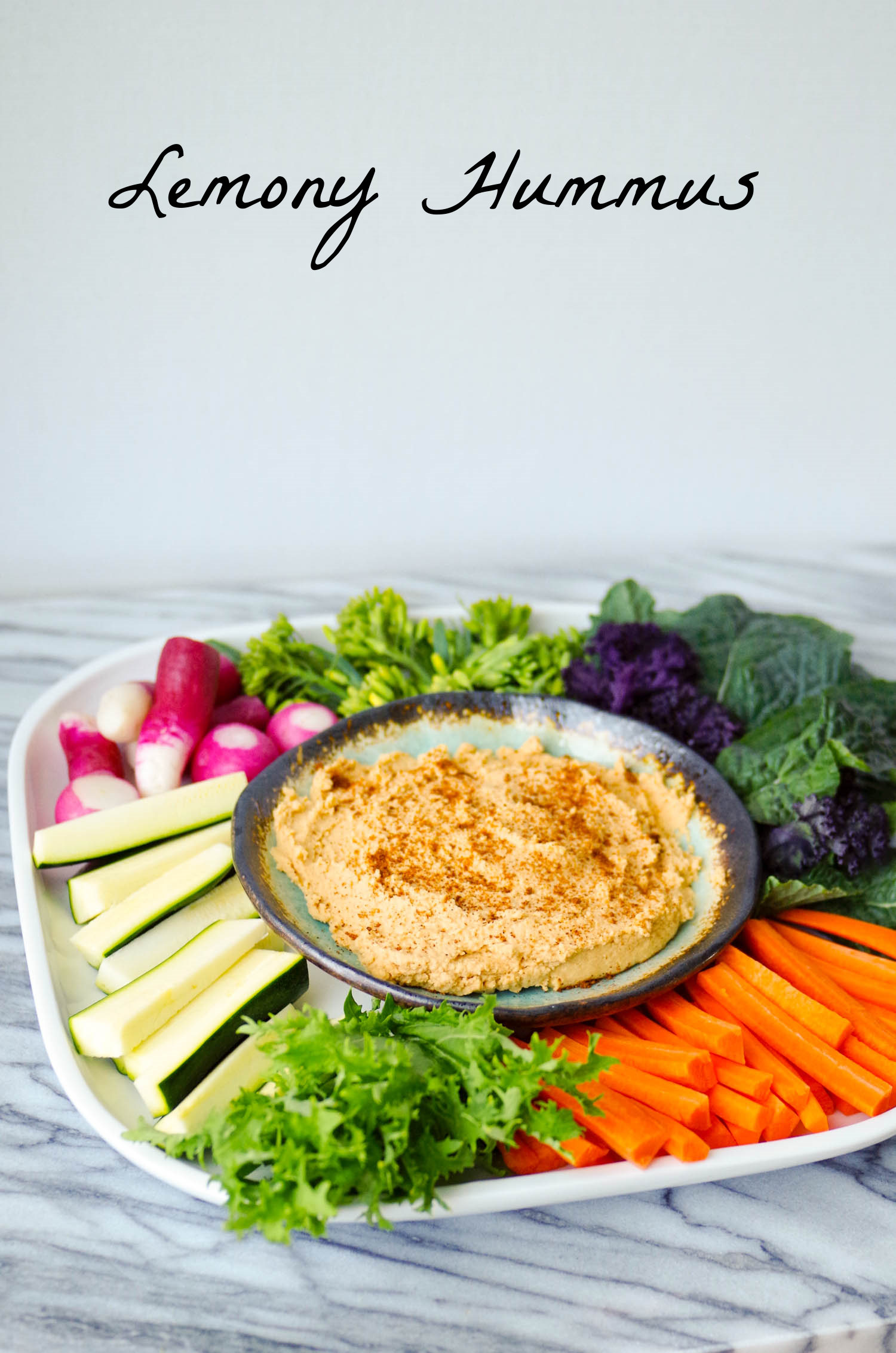
Lemony Hummus Recipe
Ingredients
2 15.5 oz cans or 3 cups cooked chickpeas (garbanzo beans), drained
½ cup tahini
½ cup nutritional yeast
1 teaspoon garlic powder
1 teaspoon smoked or sweet paprika
½ teaspoon coriander
Zest of 1 medium/large lemon
Juice of 1 medium/large lemon (about ¼ cup)
½ cup veggie broth
Garnish with more paprika on top if desired.
Recipe Steps
-
Place the chickpeas, tahini, nutritional yeast, garlic powder, paprika, coriander, and lemon zest in a food processor.
-
Turn on the processor and mix until the chickpeas are mostly broken down.
-
With the processor running, pour the lemon juice through the feed tube.
-
As it still runs, slowly pour the broth through the feed tube and continue to mix until well-blended. If needed, add filtered water or more broth until you have the consistency you desire.
Yield: About 4 cups
Time Estimates:
Prep time: 7 minutes
Cook time: 5 minutes
Total time: 12 minutes













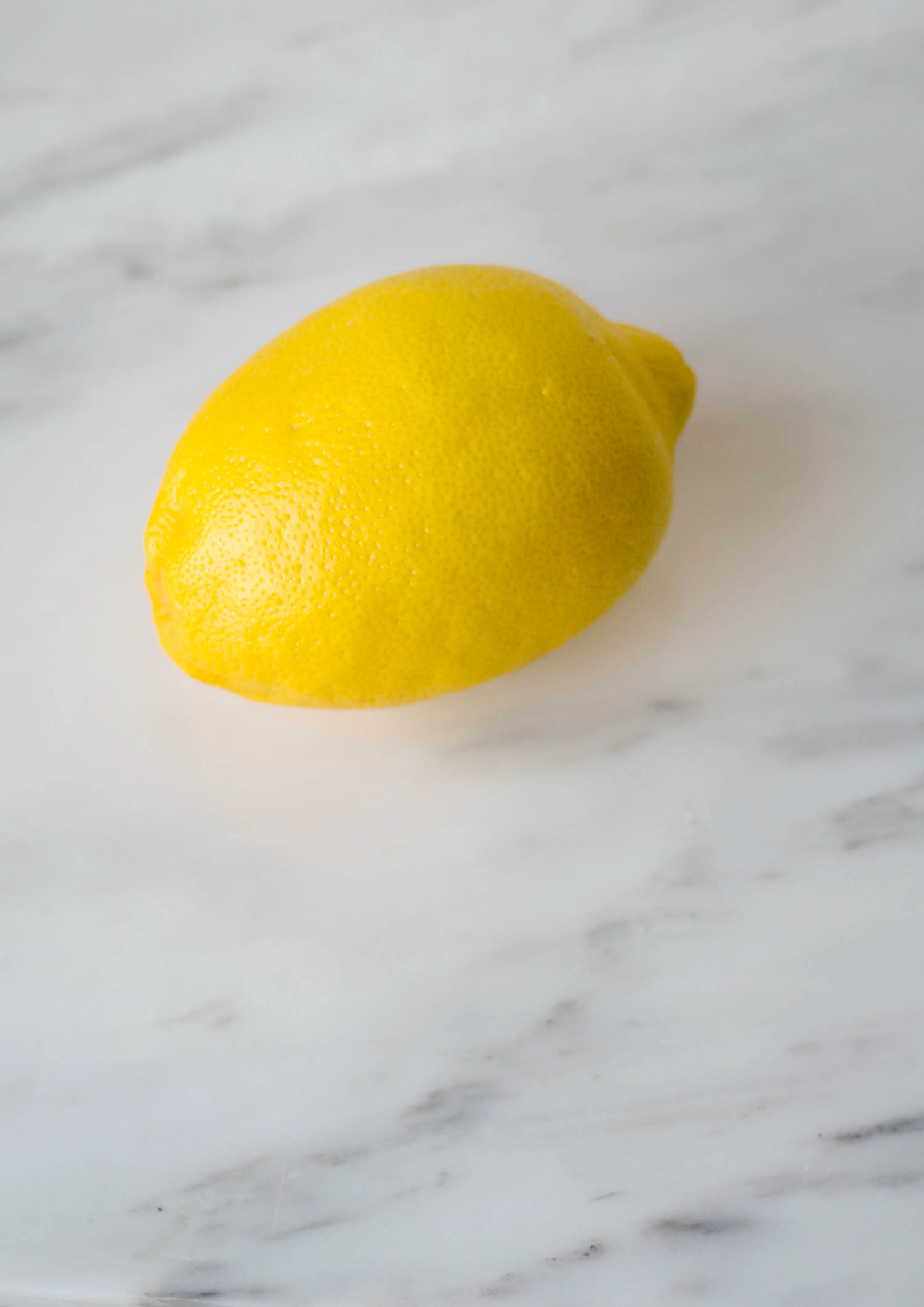
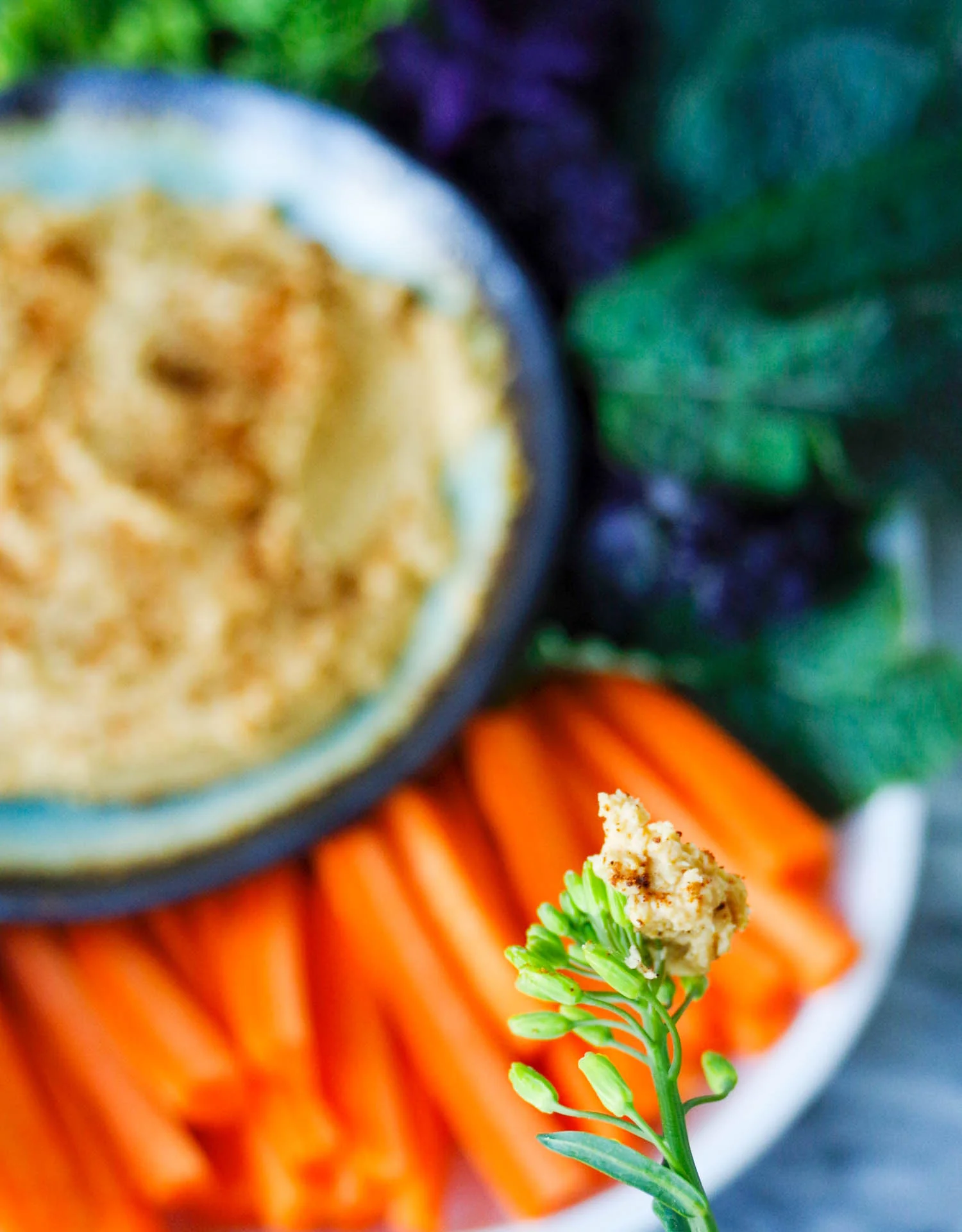
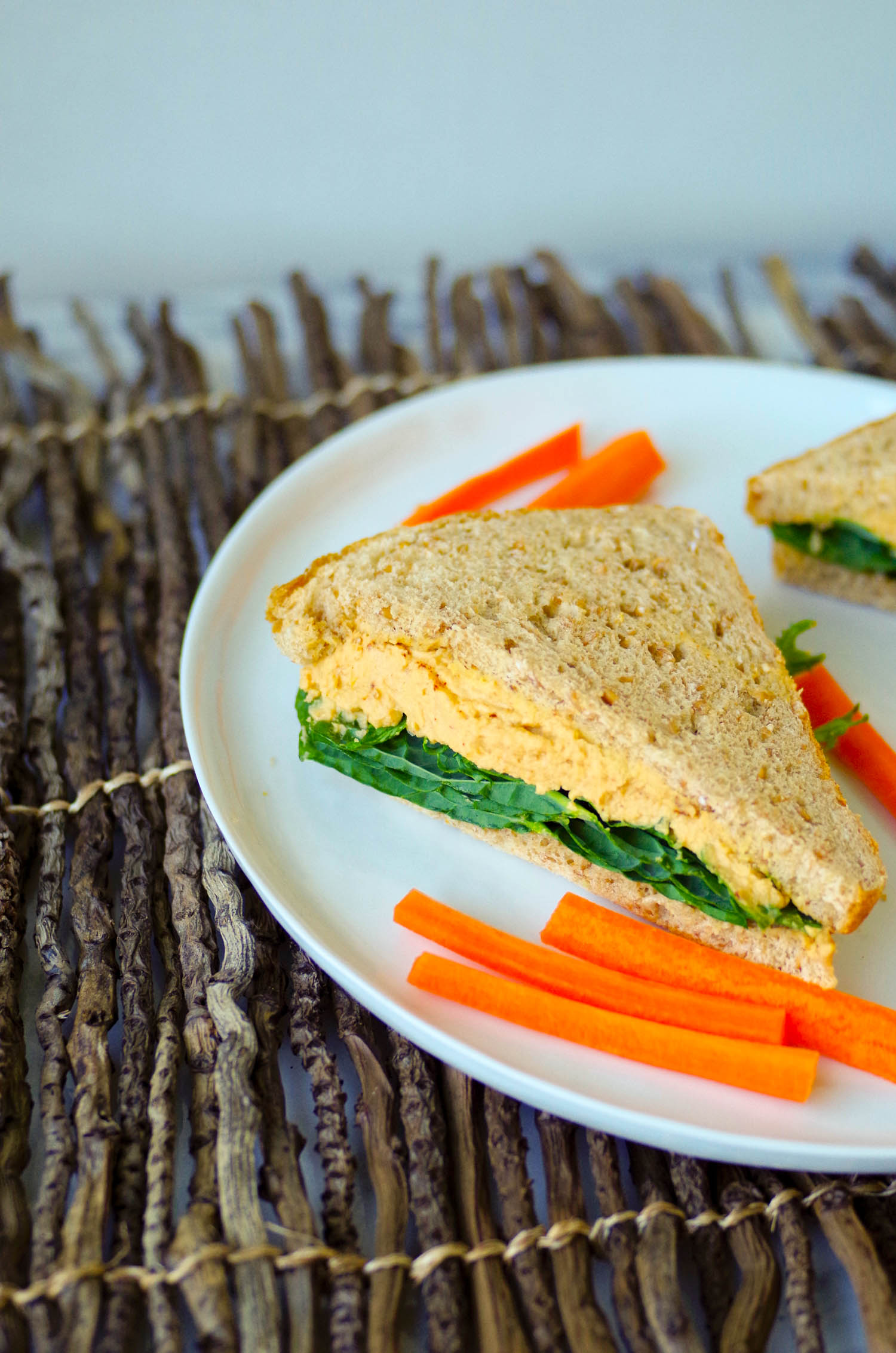
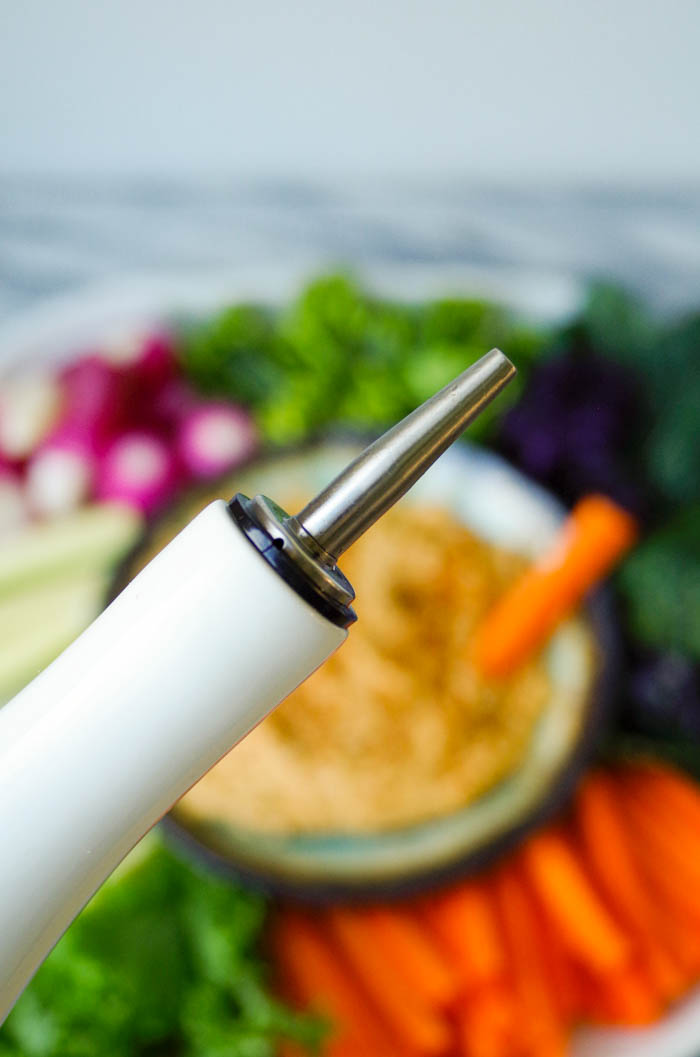
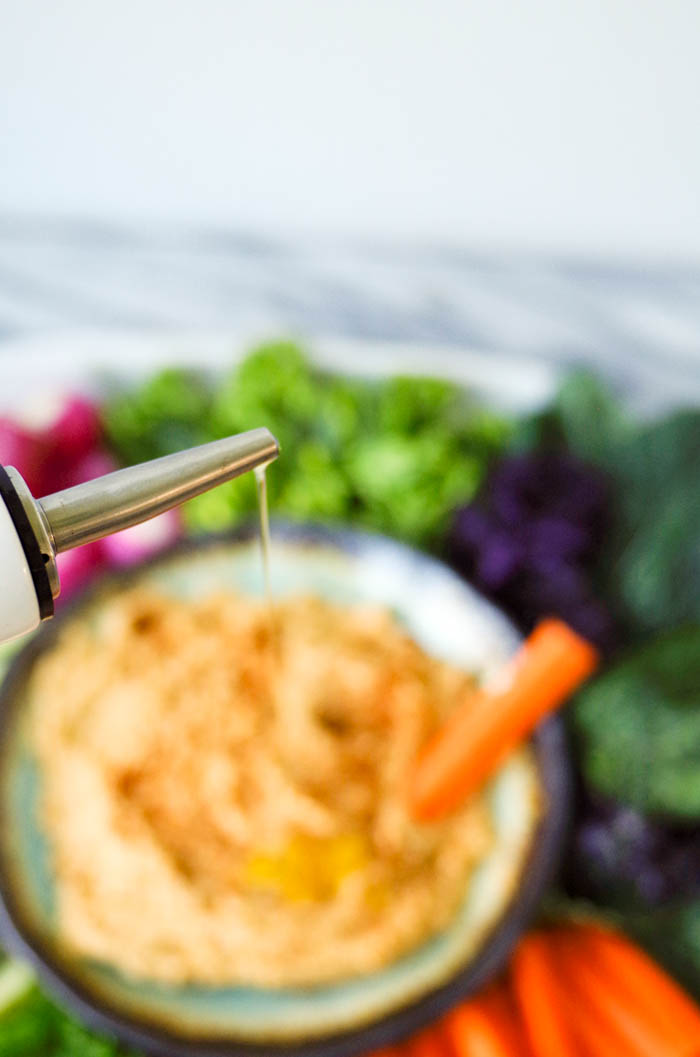
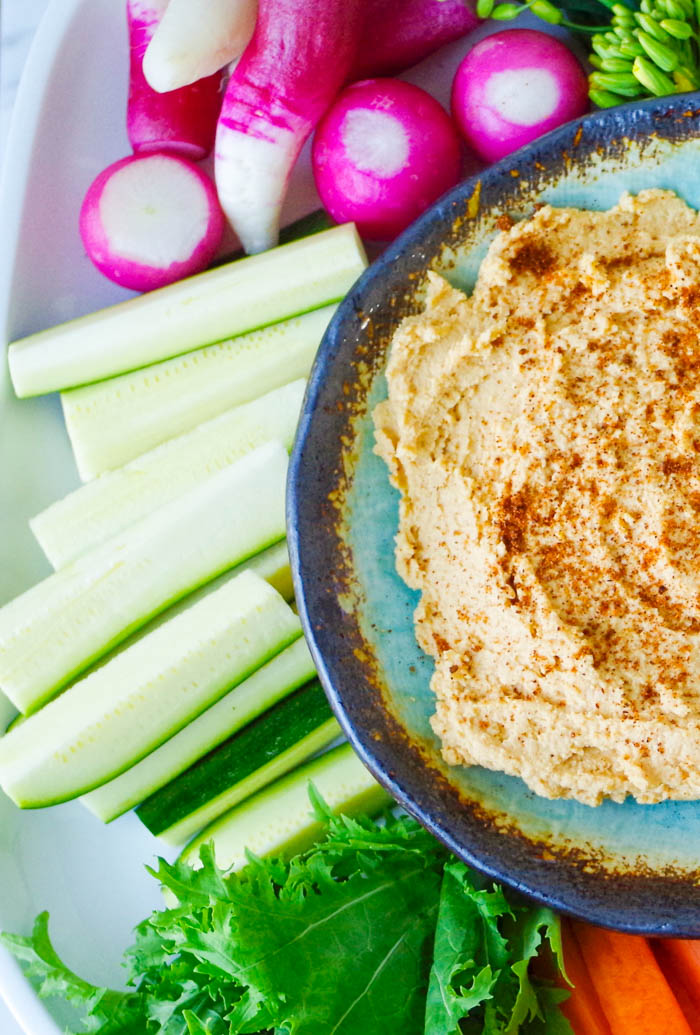

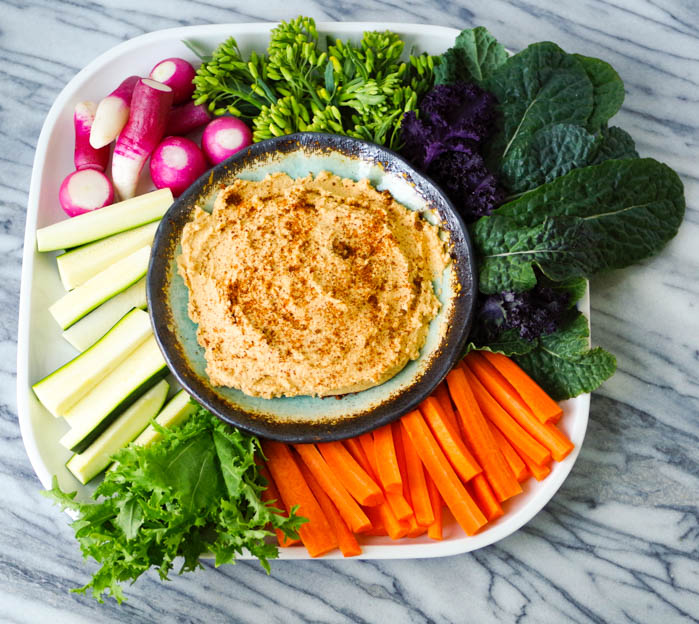
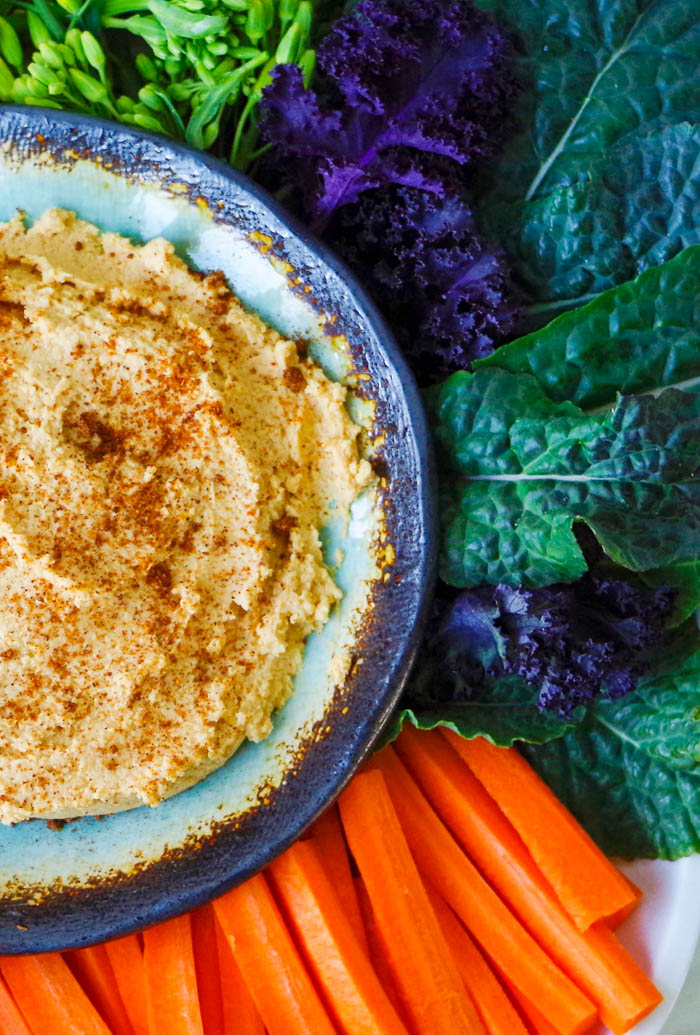




Leave a Reply